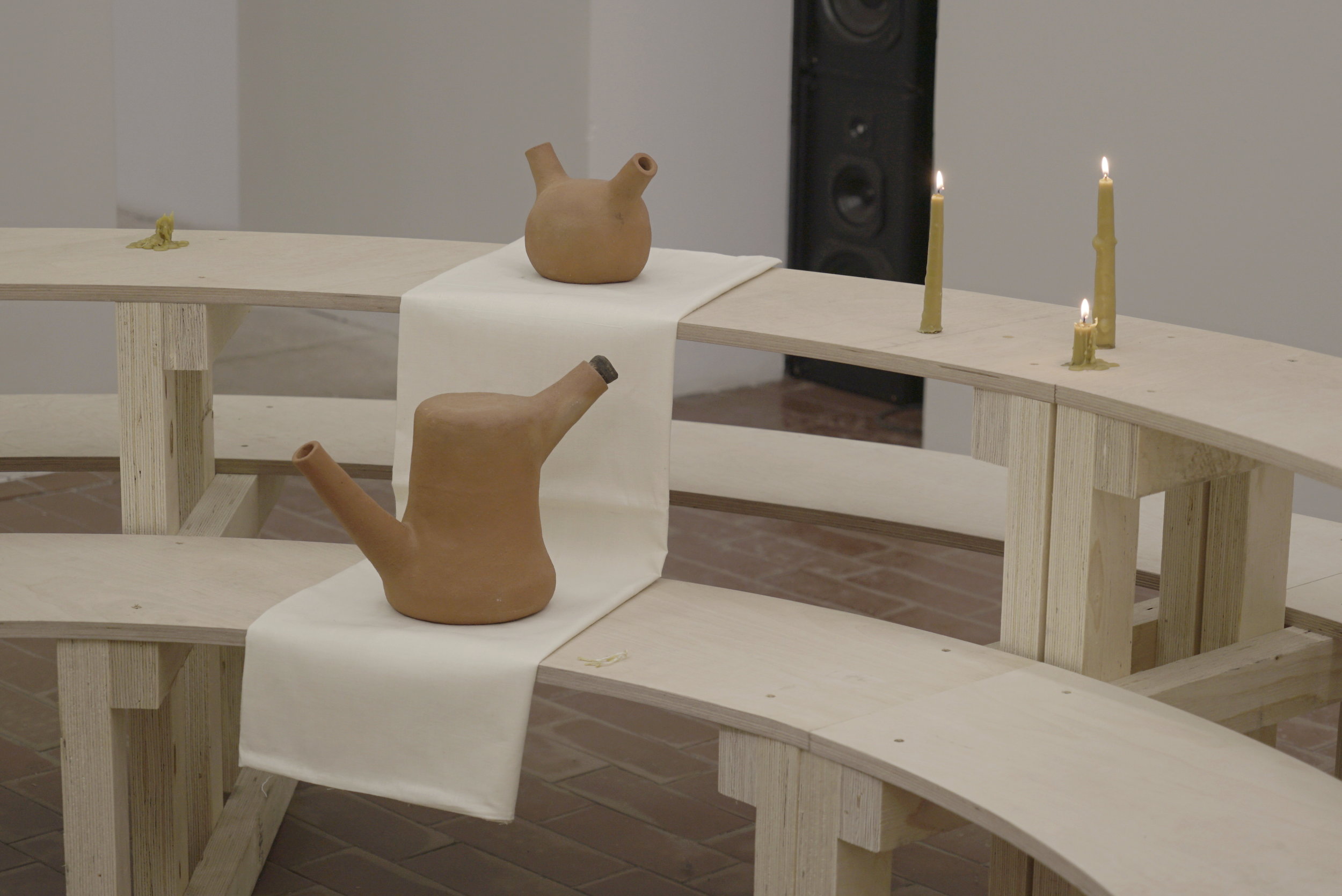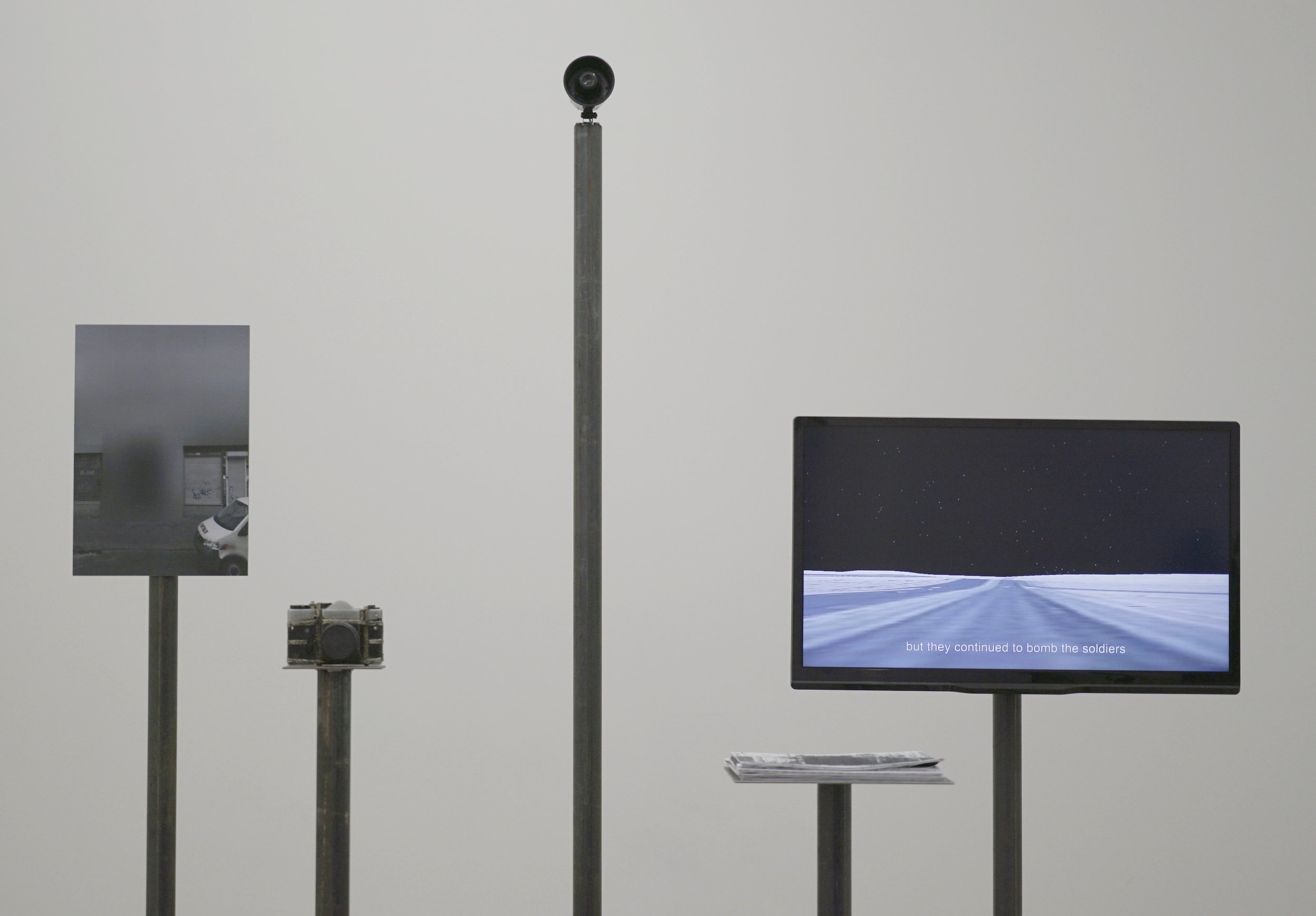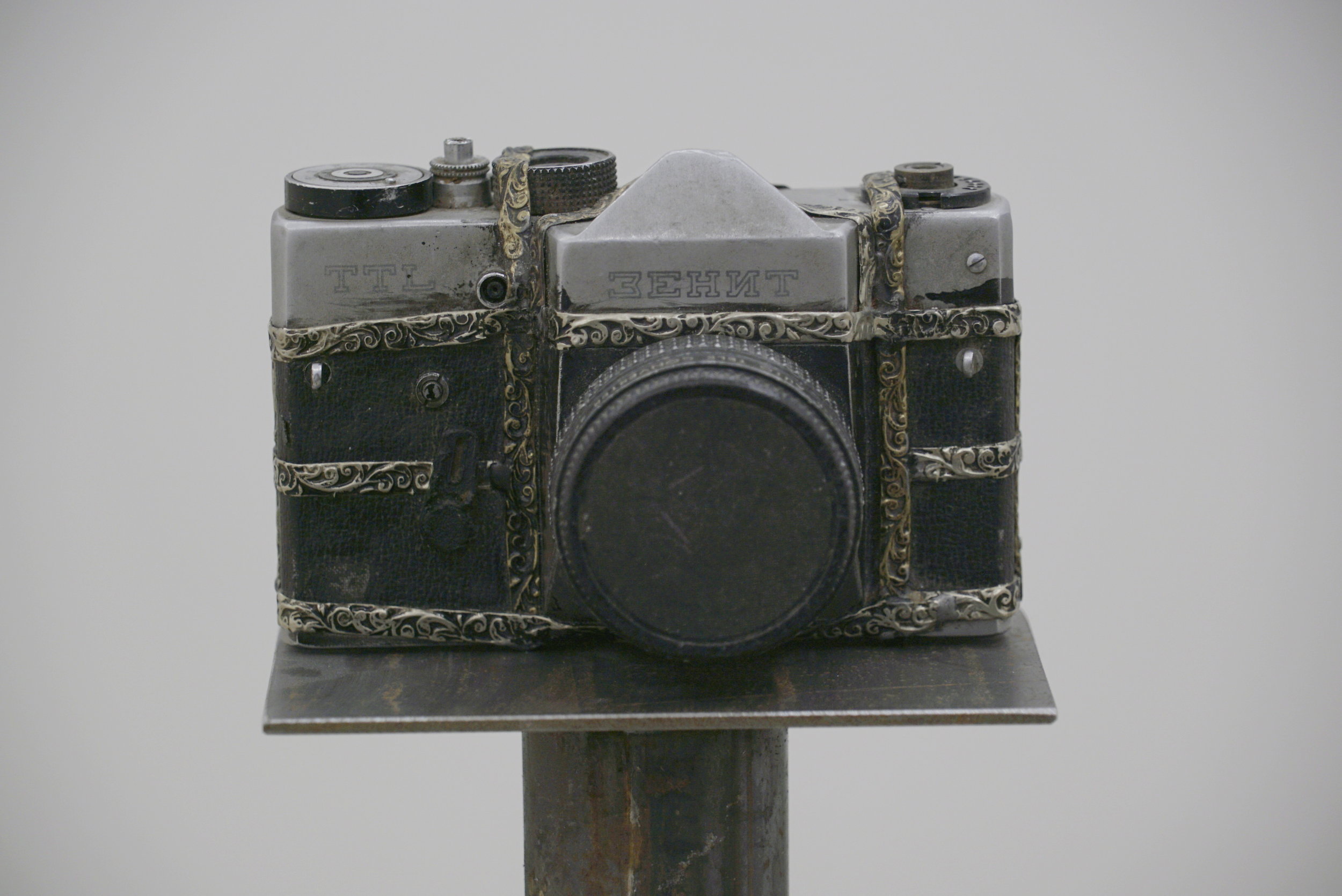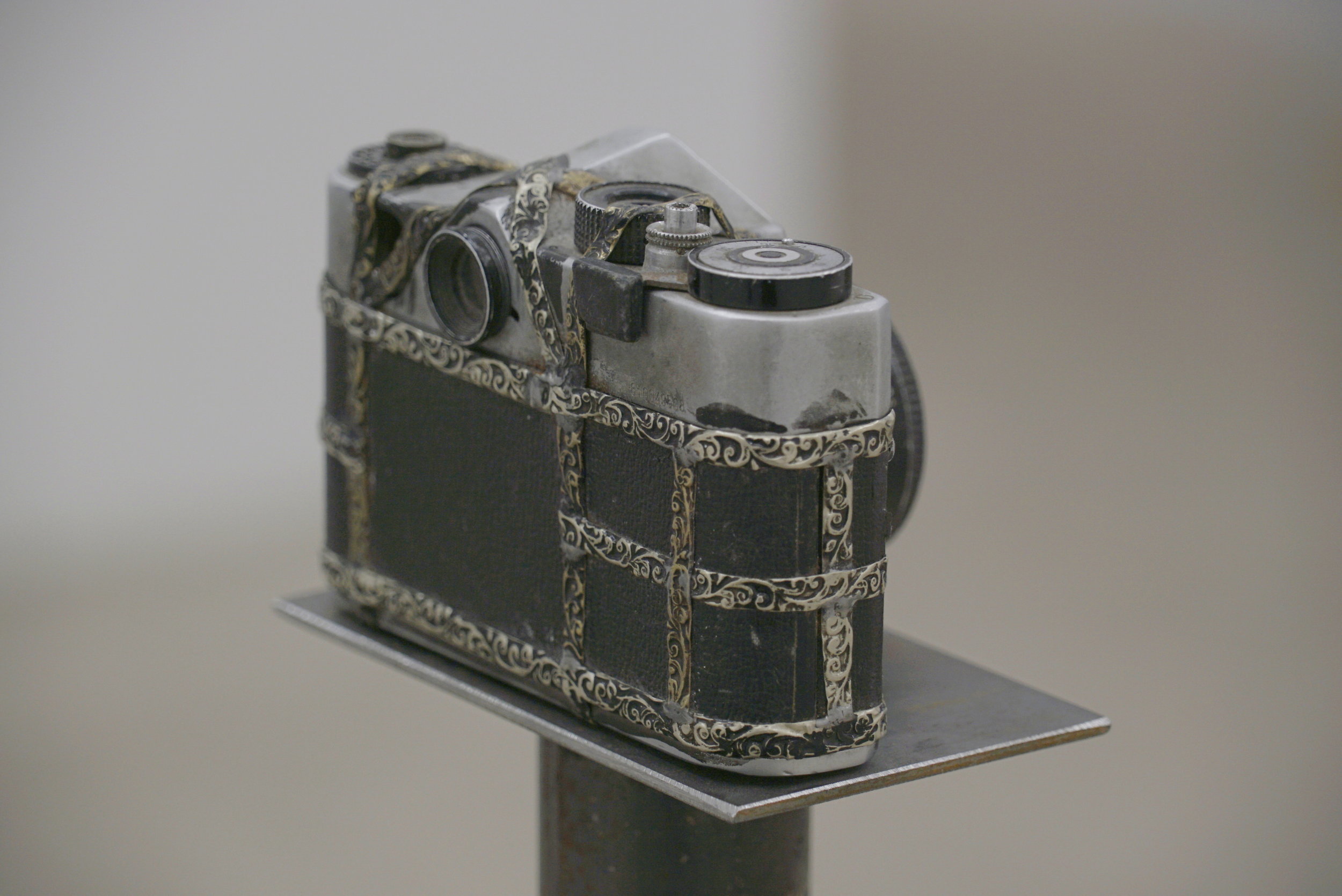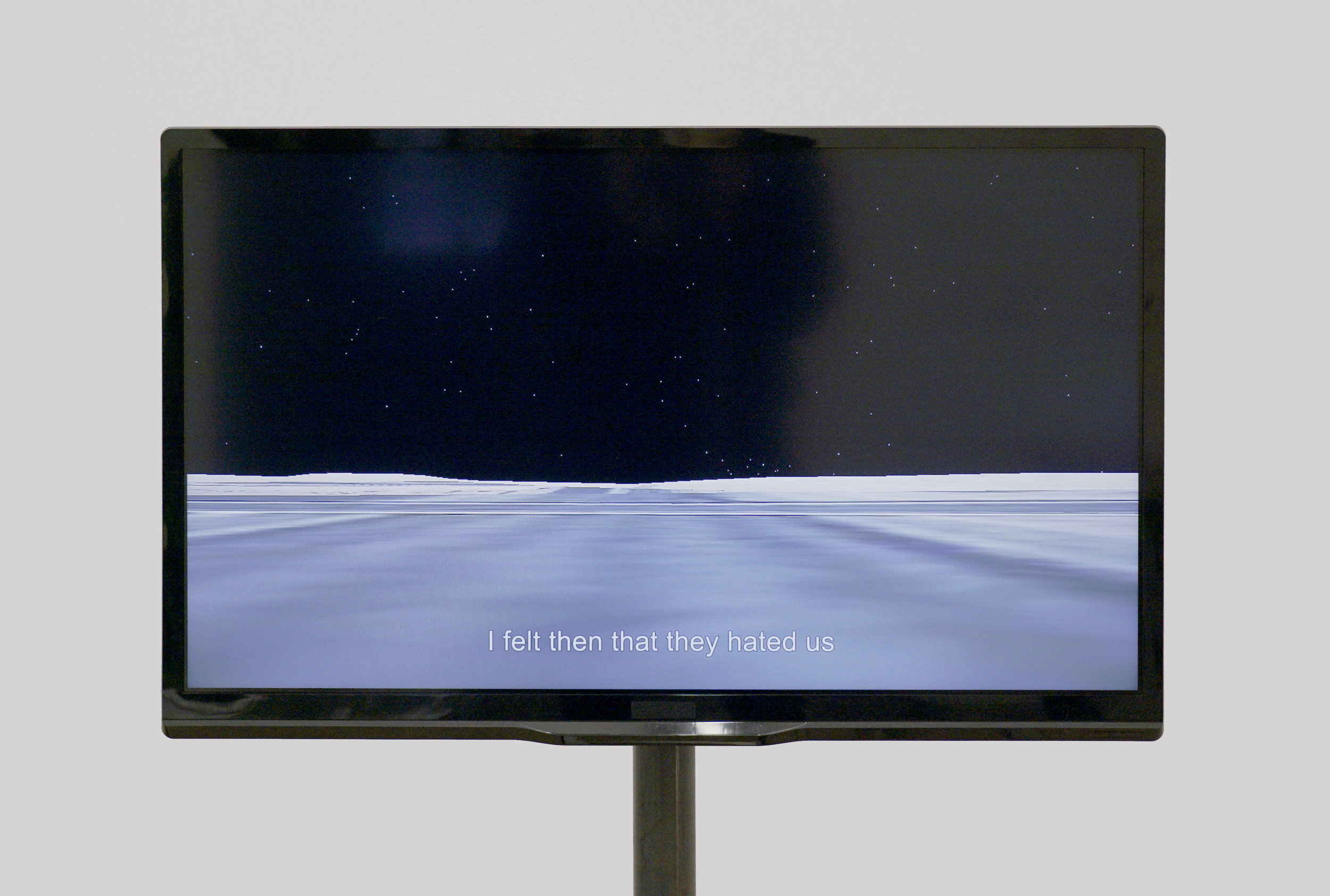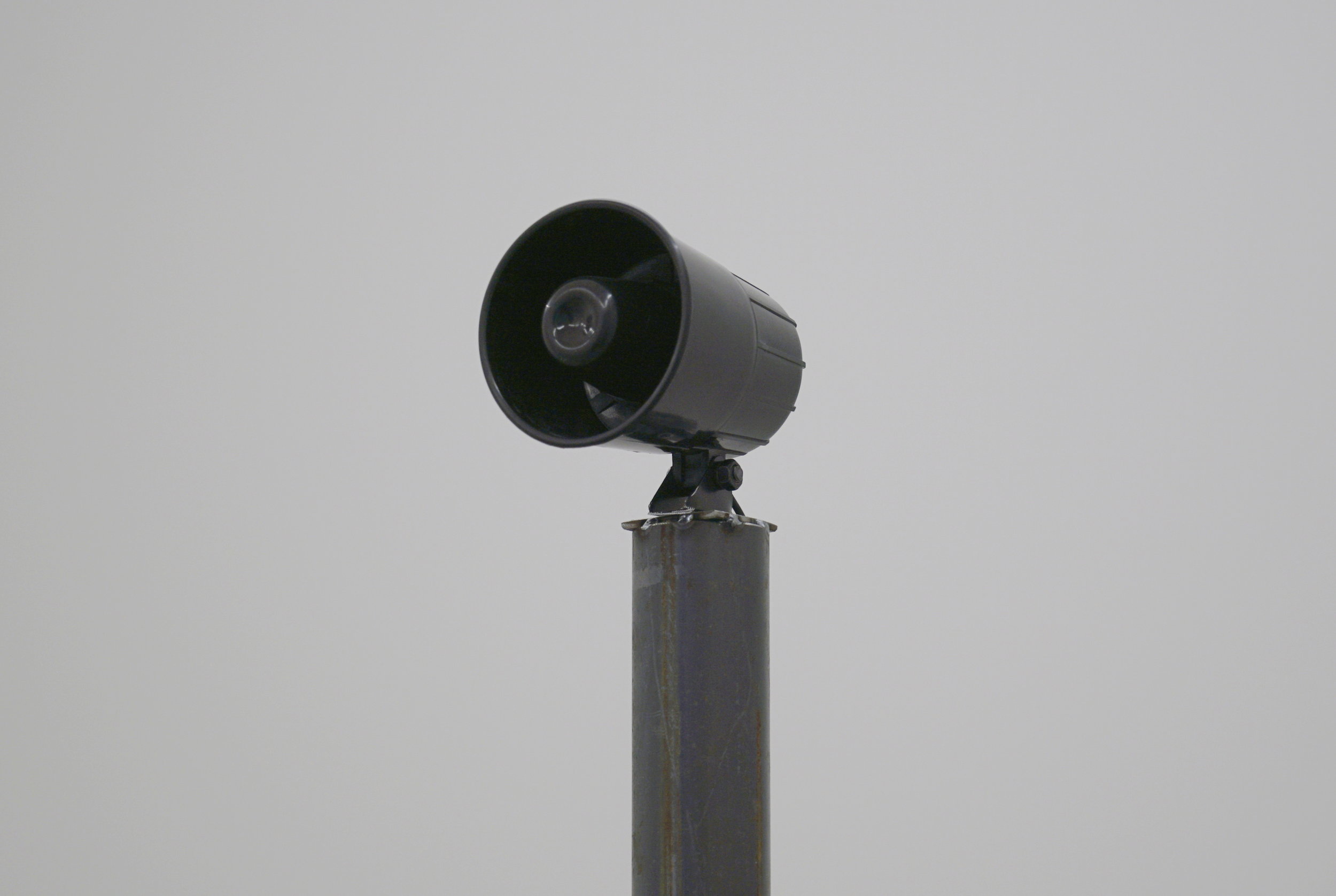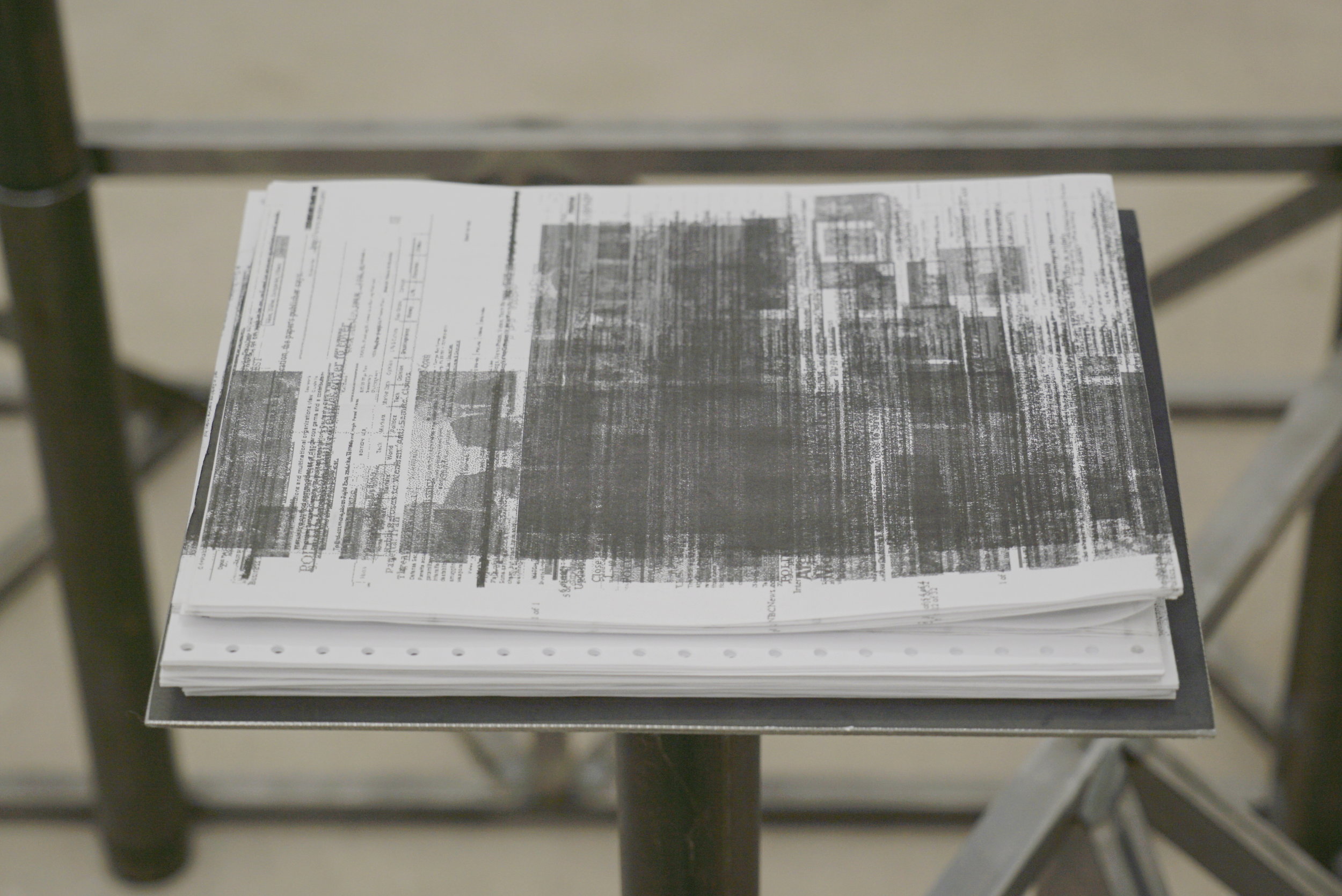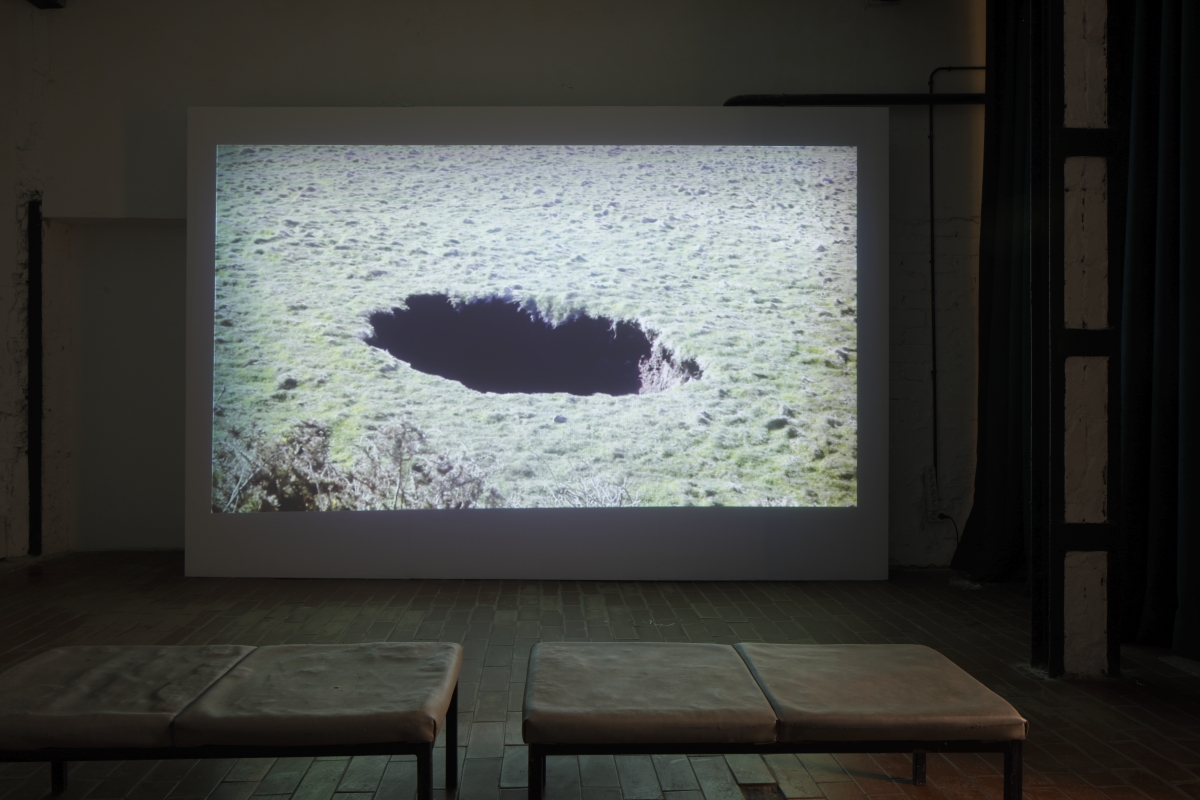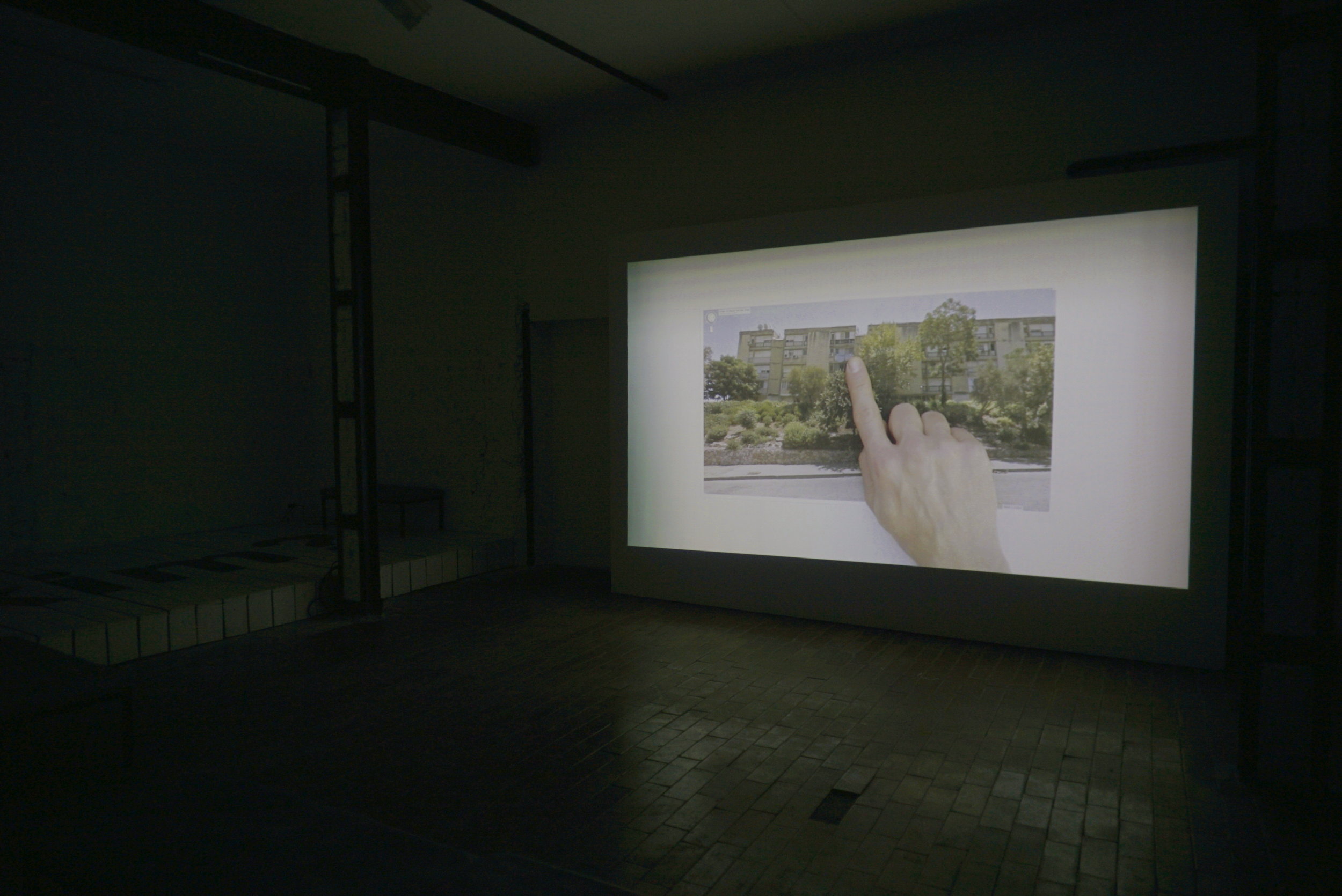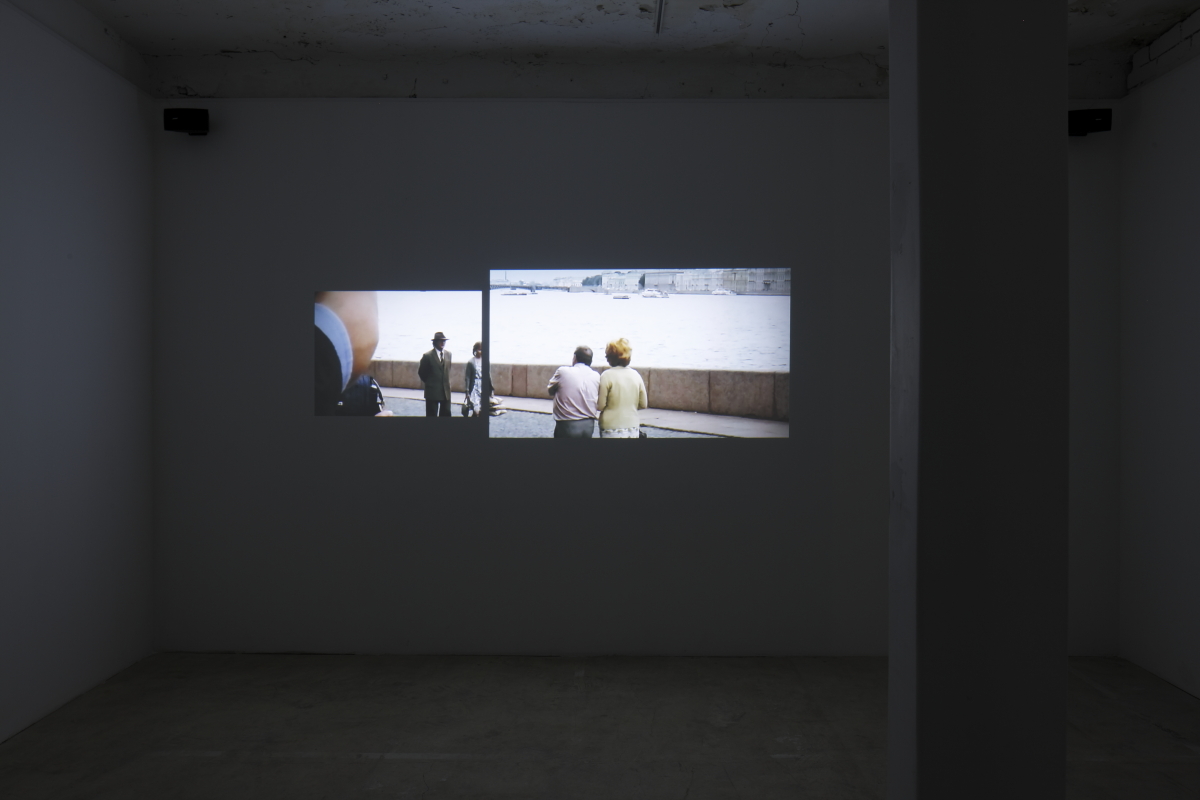From the Body I Spent
Curated by Maya Tounta
Kim? Contemporary Art Centre
Riga, Latvia
February 15 - March 29, 2018 LINK
Reviews:
Arterritory Interview
Arterritory
Fluxo Echo Gone Wrong
‘Sometimes, waking, I forget where I am’, I imagine Felix telling me over the phone. ‘I am glad to know what I am worth, as everyday raptures. My collected customs like words begin to form a certain vocabulary, cliffs for another life. I bring them together as if to measure the value of everything. The tide rises, the tide falls. I hear the globe spinning, you landlocked in the hoof of the earth, me loosed from it, expelled, often arriving at heaviness. Sometimes, waking, I forget where I am, but out of the airy treasure, a sound opens sound, a place opens another place, and I can see again–miles of arteries, cavernous cities, words through sea salt–and my pseudonym begins again. Every day, I depend on a small seizure from the body I spent, to document the world by documenting myself–the dissonance traveler.’
From a body I spent is the first solo show by Russian-born, Toronto-based artist Felix Kalmenson in the Baltics. It is a survey of video works from 2012 to today, and sculptures created on-site with collected materials from the city. Kalmenson’s work variably narrates the liminal space of a researcher’s and artist’s encounter with landscape and archive. By bearing witness to everyday life, and hardening the more fragile vestiges of private and collective histories through their work, Kalmenson gives themselves away to the cadence of a poem, always in flux. From Birobidzhan, Cornwall, Kuala Lipis, Toronto, Vilnius, Riga, Moscow, St Petersburg, Singapore, and elsewhere, Kalmenson looks onto the world, and traces the inconspicuous histories that follow their gaze.
Text by Maya Tounta
Кружок / Kruzhok, 2018
The amphitheatre structure speaks to the history of kruzhok ( Кружок ), Russian for geometric circle or learning circle. For Kalmenson it reference s the reading groups organised by the Bundists to teach Yiddish-speaking factory workers Russian literacy through translated Marxist texts. [1] Kruzhoks became the foundational organising components of the Bundist movement during the Civil War as radicalised Marxist cells fighting as rebel units. In Kalmenson’s work, the kruzhok and the Bundist movement serve as models for non-territorialist societal formations bound by historical and cultural affinities. In the exhibition, the amphitheatre becomes a stage for a performative reading of a text, “Forever’s gonna start tonight,” written by Kalmenson in Singapore. The text weaves together references to the history of geology and deep time, Lurianic Kabbalah traditions and Russian Cosmism, with recounted visions, diaristic logs, and retrocognitive experiences. Accompanying the reading, Kalmenson performs an act of ritual exorcism based on a Yiddish tradition in which the haunted excises the spirit that’s haunting them by measuring their grave, producing candles of that length, and burning them. Performance track by Kaspars Groševs.
1—Bundism was a secular Jewish socialist movement, whose organizational manifestation was the General Jewish Labour Bund in Lithuania, Poland and Russia (Yiddish: Algemeyner Yidisher Arbeter Bund in Lite, Poyln un Rusland), founded in the Russian Empire in 1897. (Wikipedia)
An Ethic for New Soil, 2018
The Treachery of Images , 2014
Soviet-made Zenit camera (modeled after German Leica blueprints pillaged following WWII) sealed by a Marrakech artisan purchased in the medina.
Verpixeln , 2014
An image taken from Kalmenson’s 2014 digital publication, which compiled ‘pixelated’ Street View images from various streets in Germany wherein house owners had opted out of Street View due to concern for their unencrypted wifi data being illegally collected by Google Street View Cars. The work makes reference to the 2010 court case “Joffe V. Google, Inc” that exposed Google’s unauthorised collection and use of ‘payload’ data.
Highway 80, 2014
Highway 80 refers to a six-lane highway in Kuwait that runs from Kuwait City to the border town of Safwan in Iraq. This highway was the site of the infamous ‘Highway of Death’ in which American and Canadian aircraft and ground forces attacked the retreating Iraqi army near the end of the Persian Gulf War on February 25-27th 1991, resulting in 1500 destroyed vehicles and hundreds of Iraqi soldiers and Palestinian refugees killed or captured. This assault was seen by many as a war crime and a breach of the Geneva Convention. The resultant fear of a PR backlash led to the consequent ending of hostilities. While the Gulf War was the first live 24-hour televised war with unprecedented footage of missiles dropping in real-time being relayed to television screens across the world, the supposed breadth and speed of access to images did not translate into in-depth or critical reportage. The U.S.’s policy towards media freedom was more restrictive than in the Vietnam War with the Pentagon document Annex Foxtrot limiting press information to official military briefings and limited access by selected journalists to interview troops who were pre-approved. The policy was meant to avoid a fomenting of opposition domestically and to present the narrative of the Gulf War as a moral and balanced war of liberation as opposed to a disproportionate massacre to secure access to oil stocks. Even with the obvious atrocity that occurred at the ‘Highway of Death’ western media outlets downplayed Iraqi casualties and reiterated the army’s position that it was an armed retreat despite numerous evidence to the contrary.
In Highway 80, the text from an interview by Nora Boustany with Khaldoun, an Iraqi Republican Guard soldier is presented in subtitles, providing a recounting of the events of the ‘Highway of Death’ from the perspective of the retreating Iraqi army. This text is set against a cold night landscape of a google earth screen capture traveling along the path of the highway.
HLS-F71 , 2014
Drawing a parallel between the Gulf War and the ongoing Civil War in Syria, HLS-F71 investigates how new methods of communication have reshaped the way conflict is understood through mass media. HLS-F71 uses the Twitter feed of the pro-rebel group “The Local Coordination Committees of Syria” from 2012, like a score to activate a loudspeaker blaring the recorded sounds of the HLS-F71 air raid siren used in Israel during the Gulf War. This is underscored by an FM transmission of audio from videos of demonstrations, clashes, and other scenes culled from the YouTube channels of individual activists and journalists within Syria. The sounds of traumatic conflict upload- ed by pro-FSA Syrian citizens linger silently in the invisible transmissions within the space and surrounding area. These unheard sounds will be accessible by locating the radio frequency.
Conversations , 2013
Conversations was a time-based installation that consisted of a dot matrix printer mounted on an apparatus which printed on an 11 page loop of paper. The printer was set to print one of 24 news sources every hour on the hour for the duration of the show. The news sources were determined by culling the list of most trusted news sources from newstrust.com and including ones from the artist’s preference. The resultant effect is a scroll of obfuscation, the accumulation of daily events rendered illegible. Conversations is ultimately a failed attempt at archiving the present and an acknowledgment of our inability to objectively represent the complex events of daily life. Sources: Al Jazeera, Associated Press, The Atlantic, BBC, Bloomberg, CBC, Christian Science Monitor, Democracy Now, Der Spiegel, The Economist, The Guardian, Huffington Post, The Independent, Inter Press Service, LA Times, McClatchy, Mother Jones, New York Times, Politifact, Reuters, RT, Wall Street Journal, Washington Post
The Taste of Real Bread, 2017, 5:30 The work recounts an interview with Jewish partisan Fanya Brantsovsky set against the backdrop of the partially hidden and crumbling partisan encampment in Rūdninkų Forest 40km from Vilnius. Brantsovsky narrates her perilous journey from the gates of the Vilnius ghetto to the partisan encampment in the forest which acted as a major site of resistance against the Nazi occupation. The site of the encampment and legacy of Brantsovsky have become contested in the Post-Soviet period in Lithuania as the nation struggles to confront its complicity in the genocide of Jewish and Polish nationals during WWII and grapples to consolidate an identity built on past resistance to Soviet occupation and violence.
A Mountain That Opens Like a Door and Closes Like a Mountain, 2017, 10:00 The work navigates a landscape of perforations. Falling into and emerging out of holes, the film collapses the long history of the Cornish and Welsh landscapes as sites of mourning and resistance and what it means to en- counter these fragments as a visitor to its landscape and archives. The film blends original footage of abandoned mines and Neolithic burial sites in the Penwith Peninsula with images and miners ballads from Philip Donnellan’s 1961 film The Big Hewer based on the radio play by Ewan MacColl and Peggy Seeger which bears witness to the lives and conditions of miners in the Northumberland, Durham, South Wales and East Midlands coalfields in the 1960s.
43, 2016, 03:08 A short film which gathers found and original footage to address the legacy of the Tlatelolco Massacre in the Plaza de las Tres Culturas on October 2, 1968. The films takes its title from the 43 disappeared students from the Ayotzinapa Rural Teachers’ College who went missing in Iguala, Guerrero, drawing a lineage between historical and ongoing incidents of state violence in Mexico. The work makes use of postcards, promotional film stills from classic Mexican films, archival images and footage from the massacre paired with footage shot on-site to bring into relief the ways in which memory and trauma are represented and contained within space.
A House of Skin, 2016, 16:28 A video work that charts the complex role mass-produced concrete high-rise apartment buildings have played in defining the landscapes of post-Soviet experience both in the diaspora and the country of origin. The work proble- matises the grand narratives that have accompanied both the formations and failures of the modernist architectural and social project and introduces ruptures that inscribe vernacular ways of being and telling. The work re- examines these architectures, not as totalizing spaces, but as affective frame- works within which various narratives of violence, struggle, migration, and displacement play out. Drawing together disparate fragments of liveleak and youtube footage from Russia, ‘Little Moscow’ in North York (Canada), segments from Soviet Cinema, contemporary Russian propaganda films and artifacts from Kalmenson’s family archive, the work pieces together a delirious narrative that charts the coexistence of bodies in buildings.
Neither Country, Nor Graveyard, 2017, 59:40 The work is centred around Kalmenson’s migration from Leningrad, USSR and return after 27 years to Saint Petersburg, Russia. ‘As I was too young to remember the city, I worked to negotiate its sites and spaces of memory through email correspondences with my family and our sole remaining family video as a guide. In 1989, the year we immigrated, when one left the Soviet Union they were stripped of their citizenship and had no opportunity to ever return. In light of this ultimate departure many families, like my own, hired a videographer to film them, not in intimate spaces, but in central touristic sites, in turn producing the subject as a tourist in their own city. In Neither Country, Nor Graveyard I set out to create a shot-by-shot remake of this departure video, a process that is interrupted by commercial film sets, traffic, and transformations of the city’s landscape as it transitioned to neoliberal capitalism. The work is inter-cut with ruminations by my mother on the conditions of life in the late Soviet Period and images that signal the optimistic construction of a neoliberal global centre against the backdrop of worsening inflation and economic sanctions in contemporary Russia.’
Made possible with the generous support of:



